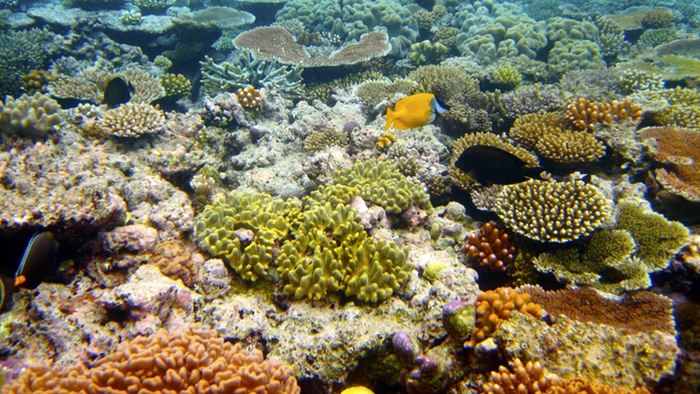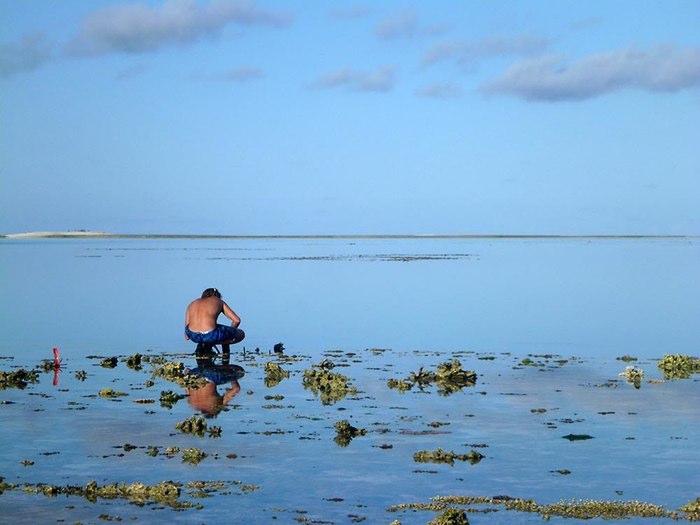Australia's stunning Great Barrier Reef is changing, and not for the better. In the years since the industrial revolution, the increasing amount of carbon dioxide in the atmosphere has made the oceans warmer and also more acidic, which is bad news if you're young coral trying to make your way in the world. In the first study of its kind, a team of scientists has altered the seawater chemistry in a natural section of the reef to mimic pre-industrial conditions, observing just how well the coral was able to grow before we came along and altered the landscape. Gizmag spoke with one of the researchers involved to learn how stepping back in time might make for smarter steps into the future.
Covering an area almost half the size of Texas, the Great Barrier Reef is home to around 600 types of coral. Here, just like other reef systems around the world, the hard, stone-like corals build out their skeletons by drawing calcium carbonate minerals from the seawater. But due to human activity, the availability of these minerals is coming under threat.
Scientists estimate that around one quarter of the excess carbon dioxide we pump into the atmosphere is absorbed by the ocean. This triggers chemical reactions that boost the acidity of the seawater, dissolving the vital calcium carbonates that provide the building blocks of not just these coral reefs, but the skeletons and shells of other marine organisms too.
That ocean acidification has this effect on coral reef systems is well documented, with previous studies carried out in laboratories or closed-system tanks showing that rising acidity is making life more difficult for corals. But for the first time, a team of researchers has now taken the science into the field, manipulating the water flowing over a natural reef flat to gain a clearer understanding of how ocean acidification is impacting natural coral calcification.
"We ran the experiment over several years, doing intensive field work and took measurements each day that we were on the reef," Kennedy Wolfe, PhD candidate at the University of Sydney, tells Gizmag. "The experiments were conduced on One Tree Island, which provided a very unique habitat, where we recreated the ocean conditions estimated for around 200 years ago. Our treatment was based on previous studies of atmospheric carbon dioxide throughout history."
One Tree Island sits toward the southern end of the Great Barrier Reef and presents an almost pristine natural lagoon with limited human impact, offering an ideal outdoor laboratory to carry out studies on natural ecosystems.
"This exposed reef made it quite easy to work on a specific problem," explains Wolfe. "We deployed a 15,000 L (3,962 gal) tank, which we scooped water into and added sodium hydroxide to reduce the acidity to pre-industrial levels. We then pumped the conditioned water onto the reef and took water samples to calculate the coral's uptake of calcium carbonate minerals. We were able to determine that calcification increased by around seven percent under pre-industrial conditions."
While it is difficult to estimate exactly how these results translate to the wider Great Barrier Reef, let alone to other reef systems with different tolerances in other parts of the world, they do show that man-made ocean acidification is already having an impact on coral growth. And according to some, unchecked carbon emissions could soon lead to a tipping point where ocean acidity causes reefs to switch from productive calcification to destructive dissolution. While troubled by this, Wolfe reasons that it is not all doom and gloom.
"Many have estimated that reefs will go from calcification to dissolution some time this century, which is quite concerning," says Wolfe. "Studies on this, however, fail to understand that there is always the ability of organisms to adapt. There are organisms that have evolved and adapted through ice ages and through huge shifts in weather patterns.
"There is research that does look into this adaptation, but it is only recently coming to light as these generational studies take a lot of time," he continues. "Certain species are going to be winners, while some will be losers. The Great Barrier Reef might still exist in 100 years despite net dissolution, but it will definitely look different to the reef we know today."
Rising acidity is of course just one piece of the puzzle when assessing the impact of climate change on the future of coral systems. Warming oceans, for example, present a similarly ominous threat. Increases in water temperature affect the algae living inside the coral tissue that provides them with food. This extra heat stress on the algae leads to coral bleaching and death, and though other factors can trigger bleaching events, their frequency and severity is expected to increase in line with rising ocean temperatures.
"We've seen major bleaching events on the Great Barrier Reef this year," says Wolfe. "But the real concern is that over the coming decades warmer waters will combine with acidifying oceans and things like overfishing, pollution and destructive tourism. It's when all these stressors occur in synergy that they will pose an irreversible threat to the reef."
Such factors are obviously cause for concern. While things like overfishing and pollution could realistically be reigned in, solving the problem of warming and ocean acification presents an entirely different, and perhaps insurmountable, kind of challenge.
"There has been discussion around some kind of geoengineering approach," says Wolfe. "In our experiment, for example, we added sodium hydroxide to a big bucket to alter the seawater conditions in a localized habitat, and there has been talk of doing something like this on a broader scale.
"But altering the ocean's chemistry in any meaningful way would be very labor-intensive, costly and wouldn't make much sense. The only real, lasting solution we have is to cut carbon emissions. If we keep burning carbon at the exponential rate we are now the effects will only intensify, and that bucket we would be relying on would only have to get bigger and bigger."
The team's study is published in the journal Nature.



